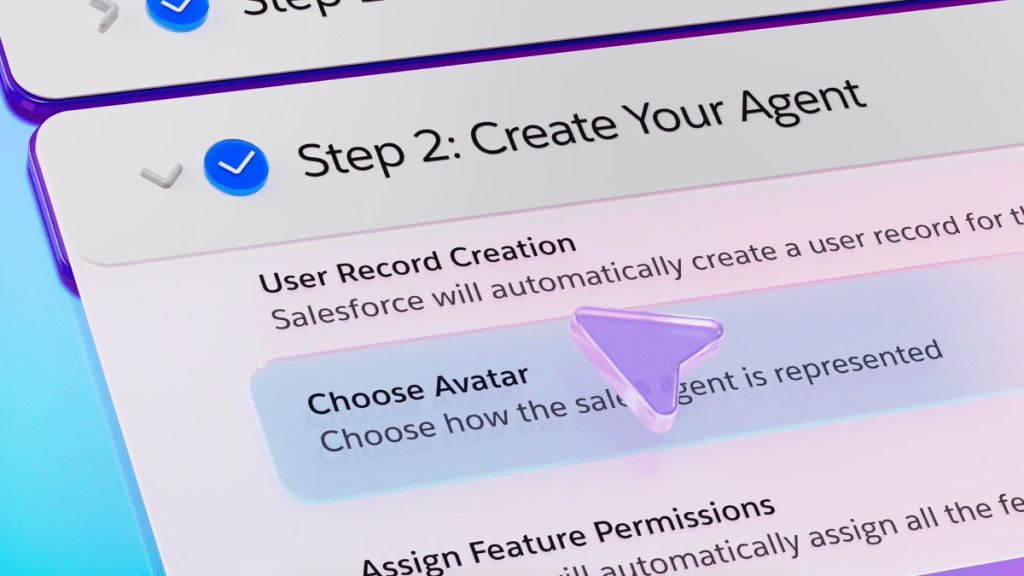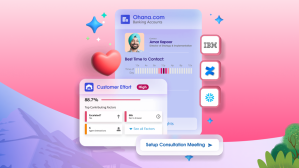“The best way to predict the future is to invent it.” Alan Kay – Computer Science Pioneer
Computing has always moved forward in a kind of jerky, stop-start motion — what biologists call a punctuated equilibrium. New technological capabilities emerge gradually from research labs and garage tinkerers until, eventually, it feels like something new is in the offing. One or more pioneering feats of invention follow, shifting the axis of possibility. Suddenly, we find ourselves in a new paradigm and standing witness to platforms that unleash waves of innovation. Examples include the Apple Macintosh, the iPhone, and our own Salesforce Platform, which advanced an enterprise software as a service (SaaS) model that spawned an entire industry.
Suddenly, we find ourselves in a new paradigm and standing witness to platforms that unleash waves of innovation.
Alan Kay was one such pioneer. In 1971, when Kay began his work at Xerox PARC, the computers he worked with were as big as a room, and only four of them were connected to the emerging ARPAnet, a precursor to the Internet. Kay, a gifted musician, brought a humanistic sensibility to innovation that helped him invent the Dynabook, a daring vision for personal computing, in 1972. The Dynabook was a battery-powered laptop with a touchscreen and wireless access to all the world’s information and, most radically, was suitable for use even by children. Kay and his team at PARC went on to invent many core building blocks of modern personal computing, including overlapping windows, the graphical user interface, and dynamic object-oriented programming. Later, at Apple, Kay also helped develop the vision for the iconic 1987 Apple Knowledge Navigator video, a clear antecedent of the iPad and the iPhone.
Agentforce brings the future to the present
The symbiotic dance between visioning work and the development of raw technological possibilities came to mind as Salesforce Futures reflected on the launch of Agentforce at Dreamforce 2024. A year earlier, for Dreamforce 2023, we drew explicit inspiration from the Apple Knowledge Navigator in creating our Salesforce 2030 film, which showcased a vision of humans collaborating fluidly with sophisticated, autonomous AI agents. More recently, our magazine issues featuring Personal AI Agents and Agents at Work bridged the imagination gap across the emerging capabilities of agents and how they might change business as we know it.
Agentforce, a suite of customizable agents and tools on the Salesforce Platform, offers an elegant solution to the complexity involved in trying to deploy AI tools. It targets the challenges businesses face with integrating different components of the AI stack — data, models, infrastructure, and applications into a unified and functional system. It also takes advantage of key capabilities in the Salesforce Platform, like metadata, permissions, and security. Tools like Agent Builder and Model Builder, meantime, enable organizations to easily create, customize, and deploy AI agents while Salesforce’s Atlas Reasoning Engine enables agents to autonomously handle both routine and complex tasks.
“The end of the beginning” for a new AI age
Agentforce is an incredible breakthrough for Salesforce and the business world, which is why more than 10,000 people at Dreamforce 2024 raced to build their own agents. Customers walked into the “Agent Builder” experience at the show and turned verbal instructions into functioning agents in less than 15 minutes. For both our team and the customers we interacted with, it felt like the future was being invented and pulled into the present right in front of our eyes.
These aren’t just another version of chatbots. They are a new breed of AI that could reshape how businesses operate and deliver superior customer experiences, leading customers like Saks, OpenTable, and Wiley to quickly embrace the technology. Kevin Quigley, Director of Continuous Improvement at Wiley, put it this way: “It’s been exciting to go live with our first agent thanks to the no-code builder, and we’ve seen a more than 40% increase in case resolution, outperforming our old bot.”
These aren’t just another version of chatbots. They are a new breed of AI that could reshape how businesses operate and deliver superior customer experiences, leading customers like Saks, OpenTable, and Wiley to quickly embrace the technology.
When we see signals like this in the present, it pulls our attention toward the plausible potential of the future. Soon, we anticipate more complex, multi-agent orchestrations solving higher-order challenges across the enterprise, like simulating new product launches or marketing campaigns. On the consumer side, we foresee agentic capabilities finding their way into consumer devices and apps. These developments promise to shift both how work is done and how companies connect with their customers.
From imagining to shaping the future
Speculation will only take us so far. During the next year, with Agentforce generally available, powerful, agentic tools will be in the hands of hundreds of thousands of Salesforce customers around the world. We think the ability of these customers to express their business needs for agents will reveal use cases and applications we could have never imagined. Agentforce isn’t just a product; it’s a platform for experimentation.
Agentforce isn’t just a product; it’s a platform for experimentation.
Like every major technological shift before it, including the ones Alan Kay and his team at PARC had a hand in, the real magic won’t be in what we’ve built — it will be in what people do with it. Inventing the future means acknowledging that the future is influenced by every interaction, every agent deployed, and every problem solved in new, unexpected ways. For Salesforce Futures, this signals the need for a shift from anticipating and imagining the future to diving in and shaping it.
More information:
- Learn more about Agentforce
- Read more about personal AI agents
- Peek into the future of AI-human collaboration at work























